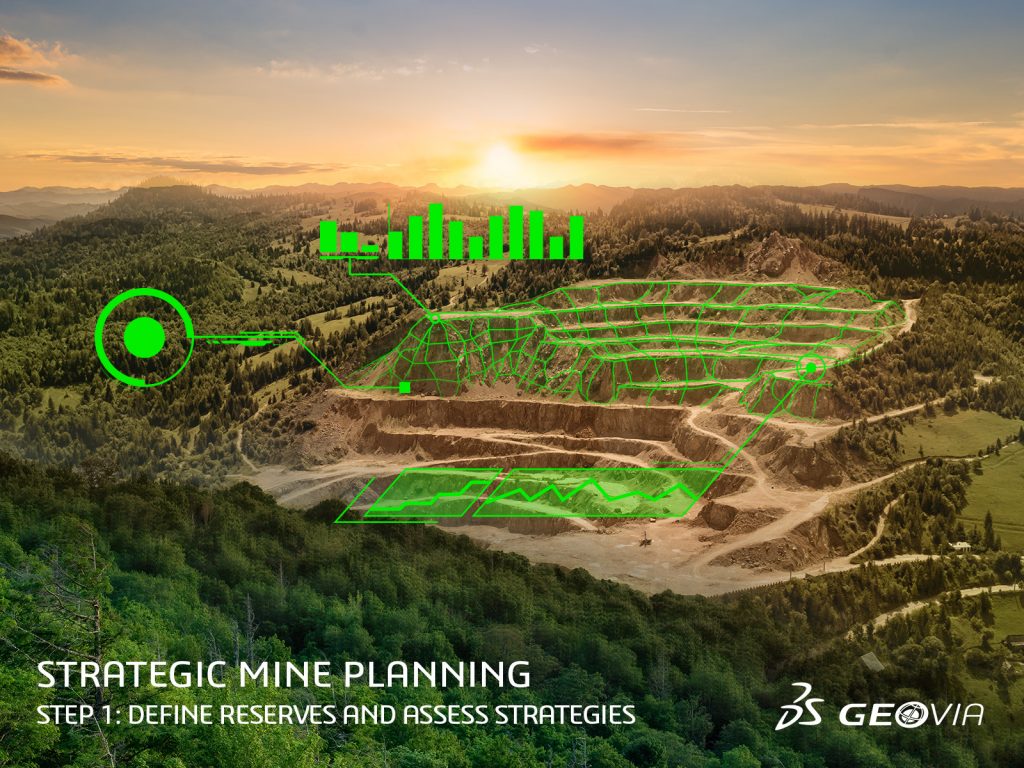
Introduction: Strategic mine planning – the basics
Strategic mine planning is essential to making the most of the value that can be realized from extracting a mineral resource. Yet many mines are not taking full advantage of this kind of planning – perhaps because they have not yet found the best way to make use of its ability to maximize the value of increasingly scarce resources and help future-proof planning decisions.
The following series of four articles will explain the key steps in creating a strategic mine plan that is robust enough to handle some of the issues the future may bring, based on:
- accurately defining reserves and realistically assessing start and growth strategies
- establishing the optimal scale of production (also known as the Hill of Value)
- optimising the strategic production schedule, and
- assessing the strength of the plan against thousands of variables, which our research indicates:
- in the best case could result in a substantial NPV increase of around 40%, and
- in the worst case would result in only a minor NPV increase, but still add significant benefit by providing a map of the feasible solution space to validate mine-planning decisions.
But first, let’s start with a few basics.
Mine plan vs. mine schedule
“Mine plan” and “mine schedule” are often used interchangeably. But they are not the same thing.
Mark Bowater, author of Crimes Against Mine Planning: Solving the Top 10 Pitfalls, defines a mine schedule as “the sequence of activities carried out at the mine site to achieve target outcomes. [It] includes a database of the quantities of the task to be scheduled, along with equipment productivities, a calendar and then some form of sequence path for equipment to carry out those tasks.” A mine plan, on the other hand, defines “the set of things to be done to allow something to be achieved” and includes “the mine designs, plus a schedule, plus the communication of it all.”
Strategic mine planning vs. tactical mine planning
Strategic mine planning concentrates on long-range short-term production planning software aimed at maximising the value derived from exploiting an ore deposit. Tactical mine planning focuses on short-range plans to maintain operational viability.
By its very nature, because it is long-term, a strategic mine plan can be affected by a variety of internal and external forces, including increased knowledge of the orebody and unexpected staffing issues as well as technical advancements and changes in legislation, economy and market. Tactical mine plans provide calculated, short-term responses to forces such as these, in order to help the mine continue to meet the overall goal – the strategic intent – of its long-term mine plan.
Critical questions
To develop the most robust strategic mine plan possible, a mine planner must be able to answer (or at least consider) a number of critical questions tied to the plan, such as:
Geological asset and its surroundings:
- What are the mineral reserves? What is the ultimate mine size?
- How will the mine plan deal with the project’s environment and social demands?
- What is the market for the product? How will the plan address market uncertainties?
Timing and sequence:
- When and where should the mine extraction start? How will the extraction align with the strategic mine plan?
- How many phases or steps should the plan consider for mining the reserves?
Operation size:
- How big should the mine/processing operation be? How many processes and products will be involved?
- What is the optimum level of investment? Is that level feasible within the plan?
Schedule:
- What is the best production schedule to achieve the KPIs defined in the plan?
- What’s the best way to assess and optimise the schedule? What constraints should we consider?
Risks:
- How will the plan safeguard stakeholders’ interests?
- What are the risks involved? How do we measure those risks?
- If possible, how do we minimize those risks?
Strategic KPIs
The answers to these questions will, in turn, help determine which strategic KPIs to measure for the long-term mine plan. While these KPIs are most commonly economic feasibility indicators, such as NPV, IRR and ROI, they can and should also include indicators that can account for other aspects, such as stripping ratio, plant utilization ratio, number of periods with negative cashflow, stockpile use (if it is a constraint), etc.
By accounting for the right KPIs, the strategic mine plan will both become the link between overarching business goals and tactical mine planning and the method for providing the flexibility a mine needs to respond to internal and external forces while still ensuring optimal resource extraction.
In our next article in this series, read about how to assess reserves and define a strategic sequence for the start and growth of the mine.
The GEOVIA User community: a community by and for GEOVIA users
Discover the community of reference for GEOVIA peer-to-peer support, materials and expert insights!
- Get started and make the most of your GEOVIA software
- Become an expert in your domain of interest
- Share your knowledge and experience
- Get help from experienced users
New member? Create an account, it’s free!
Learn more about this community HERE.


